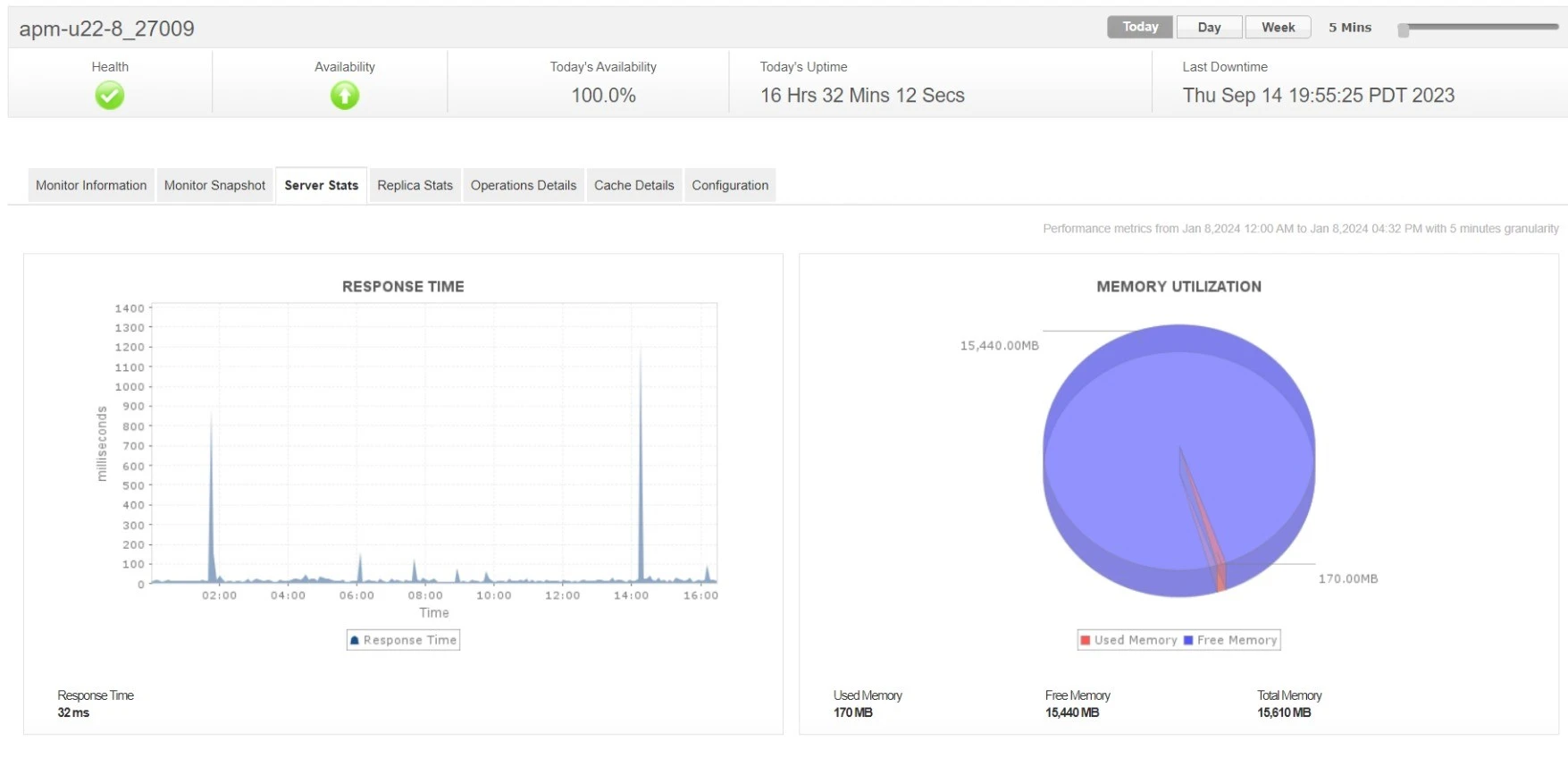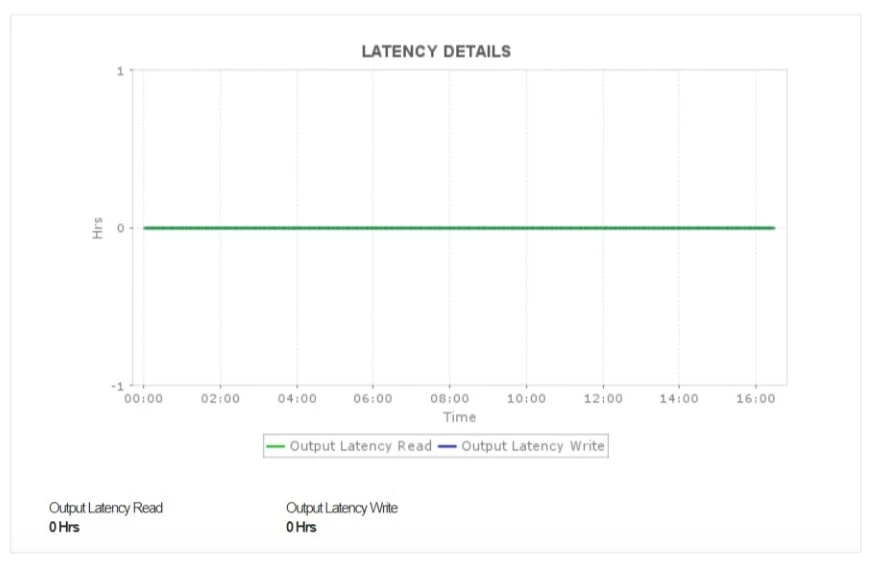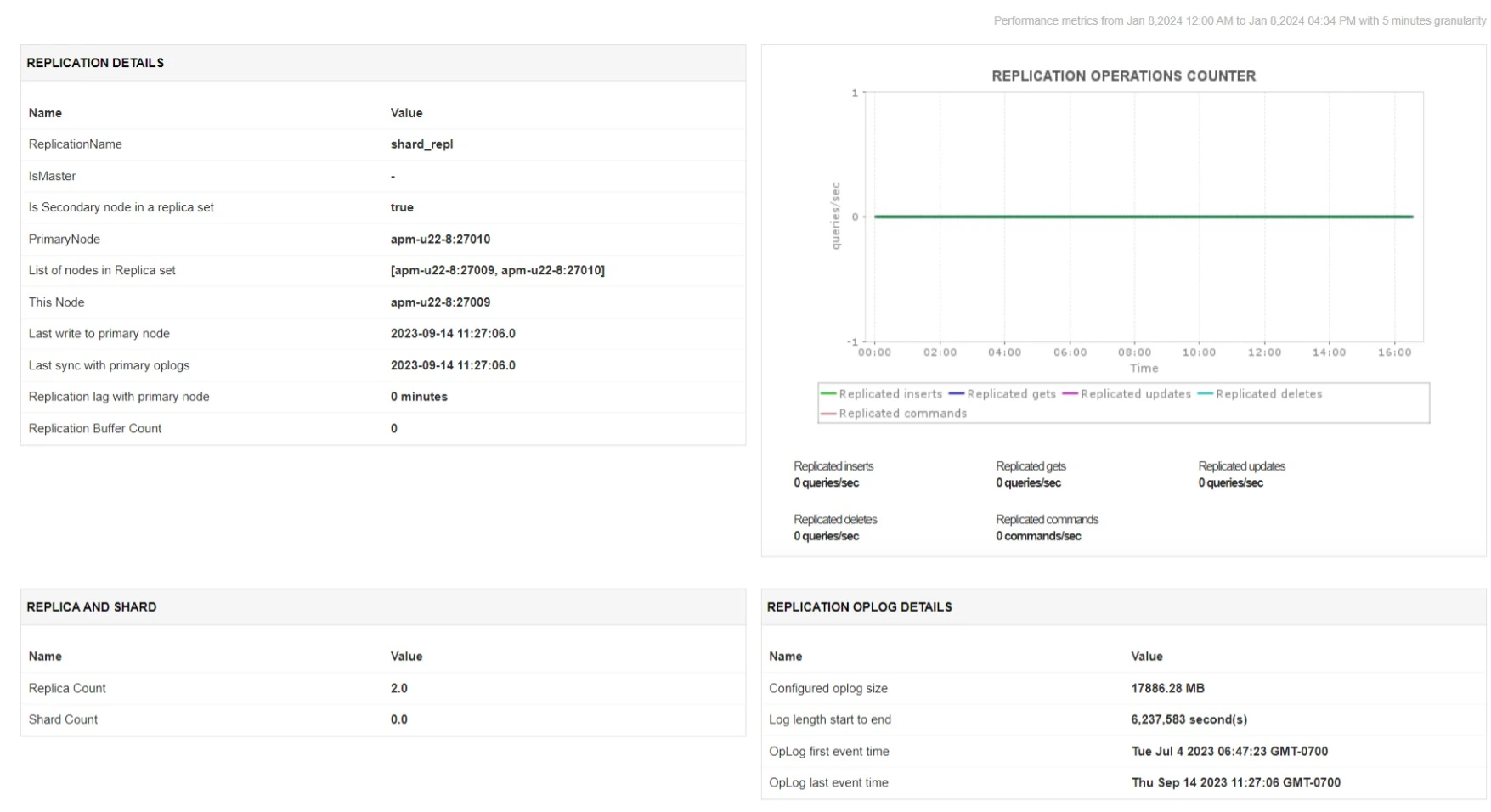MongoDB is a well-known NoSQL database server, designed to be scalable, flexible, and easy to use. The storage model used in MongoDB servers is based on Binary JavaScript Object Notation, or BSON, that makes it flexible for organizations to operate with loads of data seamlessly. To manage databases, a database administrator (DBA) requires understanding the nature and behavior of them. Monitoring MongoDB servers and their workloads in real time helps admins to evaluate performance, identify bottlenecks and performance anomalies, and proactively address them.
Organizations require a monitoring tool to gain visibility into their MongoDB database performance, locate issues that are slowing the performance down, and optimize database efficiency. With an ingenious performance monitoring tool like Applications Manager, a DBA can:
Here are the top five categories of metrics a DBA should stay informed about.
Memory usage and CPU utilization of the database servers are crucial for IT admins to understand load distribution and resource utilization trends. Optimizing workload and balancing storage to the database and the servers improves overall performance significantly. DBAs need to study the utilization trends in real time to avoid issues like resource starvation, or unused resources.

DBAs need visibility into metrics like disk throughput, read/write operations latency, active operations and I/O queues to ensure seamless functioning and to identify and resolve bottlenecks efficiently.

ManageEngine Applications Manager's detailed insights on these MongoDB performance metrics help DBAs to visualize trends and proactively react, before anomalies and operational latency affect response time.
Monitoring network traffic gives DBAs a clear idea about the amount of data that is being sent and received, and helps them identify potential network anomalies. Tracking metrics that define connections, like active connections, available connections, size of connection pools, etc. helps admins prevent issues like resource saturation and unplanned server downtime.

Locks and queries are crucial performance indicators for any database server, let alone MongoDB servers.
Metrics like Global read and write locks, Database read and write locks, query performance, and wait time need
to be monitored to optimize the performance of the database efficiently. Slow running queries can directly
impact the response time and affect end-user satisfaction.
 Tracking lock and query statistics helps admins quickly locate the issue and resolve it in time. The tool
helps admins understand the performance of locks and queries by graphically visualizing them in real time
through an easily accessible interface.
Tracking lock and query statistics helps admins quickly locate the issue and resolve it in time. The tool
helps admins understand the performance of locks and queries by graphically visualizing them in real time
through an easily accessible interface.
MongoDB servers offer replica sets as a failover for the databases and to make the servers fault tolerant
and enhance availability by sharing workload. These replica sets practice sharding, a technique that allows
the servers to deconstruct huge amount of data into smaller shards and optimally distribute them among the
servers. DBAs should stay updated on the replication and sharding processes to ensure high data availability
especially if they run MongoDB in production.
 This helps admins gain a clear understanding about the performance of replicas and ensure that proper failover
is available for the existing servers.
This helps admins gain a clear understanding about the performance of replicas and ensure that proper failover
is available for the existing servers.
Monitoring these metrics helps admins gain a clear view of where the overall performance of the MongoDB servers is going, and keeps them informed while making critical decisions like resources and capacity. With Applications Manager's in-depth insights and code-level analyses, DBAs can monitor their MongoDB servers and identify performance anomalies and slow running queries, efficiently. The smart alerts that are powered by AI help them prioritize, automate, and execute resolving actions without any delay. In addition to MongoDB, Applications Manager provides monitoring support for popular database vendors like Oracle, Microsoft, SAP, Apache, IBM, Azure, AWS, and more. Check out how you can centralize monitoring your database servers with this vital applications performance monitoring software.
Sign yourself up for a demo with our experts for an in-depth discussion or download our free 30-day trial to check it out by yourself.
It allows us to track crucial metrics such as response times, resource utilization, error rates, and transaction performance. The real-time monitoring alerts promptly notify us of any issues or anomalies, enabling us to take immediate action.
Reviewer Role: Research and Development